About ALLEGRO ‘Agile ultra low energy secure networks’
 ALLEGRO aims at designing and validating a novel end-to-end sliceable, reliable, and secure architecture for next-generation optical networks, achieving high transmission/switching capacity
ALLEGRO aims at designing and validating a novel end-to-end sliceable, reliable, and secure architecture for next-generation optical networks, achieving high transmission/switching capacity
- with 10 Tb/s for optoelectronic devices and 1 Pbt/s for optical fiber systems
- low power consumption/cost
- with > 25% savings
- and secure infrastructures and data transfers.
The architecture relies on key enabling innovations:
- smart, coherent transceivers exploiting multi-band & multi-fiber technologies for P2P and P2MP applications, based on e.g., high-speed plasmonic modulators/photodetectors and programmable silicon photonic integrated waveguide meshes;
- loss-less, energy-efficient transparent photonic integrated optical switches, eliminating OEO conversions, e.g., with on-chip amplification in the O-band for datacom applications;
- a consistent approach to security, in terms of functional/ protocol architectures and communications, further improving QKD systems, enabling optical channel co-existence and researching on quantum-resistant (post-quantum) cryptography, developing systems based on physically unclonable functions; and
- a scalable AI/ML assisted control and orchestration system, responsible for autonomous networking, dynamic and constrained service provisioning, function placement and resource allocation, leveraging devices increasing programmability and overall network softwarization.
To achieve the target objectives and KPIs, ALLEGRO has defined a clear methodology ending in ambitious demonstrators. The consortium includes a good balance of industry and research/academia with know-how in complementary fields.
The results of ALLEGRO will be disseminated in leading conferences, events, and high-impact journals. They will have a concrete and measurable economic and social impact, contributing towards achieving key European objectives, reinforcing European leadership and digital sovereignty in the ongoing digital and green transition.
Project News
Allegro Project Insight: Traffic Splitting Strategies in Optical Metro-Core Networks
In our second simulation scenario, we explored a more realistic traffic distribution:📦 50% directed to National Nodes🏢 50% routed to a Regional Datacenter We evaluated two distinct traffic splitting approaches: 🔹 P2P-split:Traffic is split at a high-capacity root...
Allegro Project Insight: Cost-Effective Backbone Networks with OSNR-Aware Design
Our latest evaluation focuses on the impact of OSNR budgets and P2P transceiver costs on total network expenditure. 🔍 Highlights from Figures 45 & 46: Figure 45 presents the distribution of P2P transceivers under OSNR degradations of:(a) 1.5 dB/span(b) 3.0...
Allegro Project Insight: Optimizing P2MP & P2P Transceivers in Metro-Core Networks
🔬 Allegro Project Insight: Optimizing P2MP & P2P Transceivers in Metro-Core Networks In our continued exploration of OSNR-aware design, we analyzed how Point-to-Multipoint (P2MP) and Point-to-Point (P2P) transceivers behave under varying OSNR budgets. 📊 📍 Key...
Allegro Project Update: Backbone Traffic Optimization
In our latest simulation, we explored how traffic is routed from Aggregation Nodes to National Nodes in the backbone network. 📡 A key highlight: we analyzed transceiver cost variations as a function of the OSNR budget available at the output of the horseshoes. This...
Allegro Project Update – Realistic Network Topology for Numerical Evaluation
As part of our simulation efforts in the Allegro Project, we’ve used a realistic and statistically accurate model inspired by a large macro-region of TIM’s operational metro-regional network. 🔧 Network Topology Overview: 🔹 95 core nodes: • 89 Regional nodes (66 hubs +...
Project Update: Allegro Architecture Evaluation Over Realistic Metro-Regional DWDM Scenario
As part of our ongoing work in the Allegro Project, we’ve completed an in-depth evaluation of the proposed network architecture using a realistic scenario inspired by actual metro-regional DWDM networks. 📡 The studied network architecture mirrors a real-world...
Allegro Project Update: Simulation Insights with Flexible Transponders
Our latest simulation results offer compelling evidence on the benefits of deploying flexible transponders in metro/regional networks. 🔧 Simulation Assumptions: OSNR degradation of 3 dB per 80 km in regional domains Adaptive modulation — lowered when OSNR drops below...
Project NEWS : Enhancing Network Efficiency with Flexible Transponders in Allegro
In our latest implementation phase within the Allegro project, we focused on mitigating OSNR degradations in metro/regional domains that traditionally necessitate P2P (Point-to-Point) connections. While effective, P2P introduces latency due to O/E/O conversions and...
Allegro Project Update: OSNR Margins and Light-Tree Optimization
As part of the Allegro project, we explored how OSNR (Optical Signal-to-Noise Ratio) margins influence the architecture of regional optical networks—particularly the efficiency of light-tree structures and transponder deployment. 🔍 Key Insights: ✅ As the OSNR margin...
Evaluating ALLEGRO’s Proposed Architecture on Telefónica’s Spanish Network
As part of our ongoing work in the ALLEGRO project, we conducted a comprehensive simulation study using Telefónica’s regional topologies (domains A–E)—each comprising 30 nodes. 🔗 Key setup highlights: 6 nodes per domain were linked to the national ultra-high-speed...
